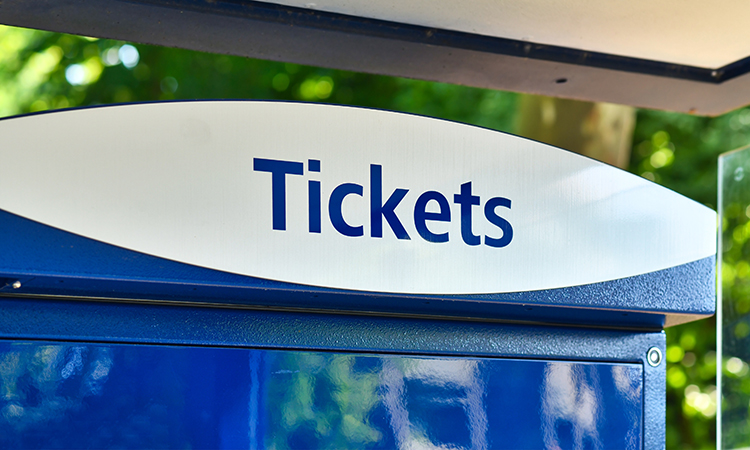Three questions all networks need to answer when expanding their ticketing offer
- Like
- Digg
- Del
- Tumblr
- VKontakte
- Buffer
- Love This
- Odnoklassniki
- Meneame
- Blogger
- Amazon
- Yahoo Mail
- Gmail
- AOL
- Newsvine
- HackerNews
- Evernote
- MySpace
- Mail.ru
- Viadeo
- Line
- Comments
- Yummly
- SMS
- Viber
- Telegram
- Subscribe
- Skype
- Facebook Messenger
- Kakao
- LiveJournal
- Yammer
- Edgar
- Fintel
- Mix
- Instapaper
- Copy Link
Posted: 27 June 2023 | Philippe Vappereau - Calypso Networks Association | No comments yet
In the fourth and final instalment of the online-exclusive series published in partnership with Calypso Networks Association (CNA), Philippe Vappereau, General Manager at CNA, asks if networks’ ticketing offer truly meets both their own needs and the needs of the passengers that they serve.


The ongoing cost-of-living crisis has placed huge strain on the budgets of both mobility providers and their customers. Passengers are paying attention to every penny, and their journeys are much less regular and predictable than a few years ago. It’s clear that transport operators and authorities need to adapt.
Currently, most networks operate a closed-loop ticketing service, but an increasing number are adding an open-loop system. The options available can generally be split into the following four categories:
- Closed-loop, proprietary ticketing
- Closed-loop ticketing based on open standards
- Closed-loop ticketing based on white-labelled EMV® cards
- Open-loop ticketing (where passengers use existing EMV bank cards for payment).
Each of these ticketing solutions has its advantages and disadvantages, and it is important to note that one size does not fit all: each network must meet the needs of the unique customer base that it serves.
The main benefit of open-loop is convenience. It offers passengers the ability to use a bank-issued contactless debit or credit card to validate their right to ride”
The main benefit of open-loop is convenience. It offers passengers the ability to use a bank-issued contactless debit or credit card to validate their right to ride by tapping it against a card reader, using NFC technology. The fare is then calculated and settled through the banking network. This means that not only are payments handled automatically for public transport operators (PTOs) and public transport authorities (PTAs), but it eliminates the need for them to issue tickets and smartcards, or maintain ticketing kiosks.
But this convenience comes at a cost, and there are still three crucial questions that networks need to answer when choosing the ticketing infrastructure that they use to serve their passengers.
Does it meet the core needs of passengers, without exclusion?
Open-loop solutions require passengers to have their own contactless bank card to exercise their right to ride. Assuming that all potential passengers will own or want to use such cards instantly excludes some demographics, including those without the desire or ability to use an NFC-enabled smartphone with a pre-loaded bank card. With an estimated 1.4 billion people unbanked globally, no network should limit its ticketing offer in such a way as to deny anyone their fundamental right to ride.
With an estimated 1.4 billion people unbanked globally, no network should limit its ticketing offer in such a way as to deny anyone their fundamental right to ride”
The tap-and-go model of open-loop means that passengers can pay with a bank card without having to register or purchase a ticket; the best-known example of this is from Transport for London (TfL). Despite the success of its Oyster Card solution, contactless open-loop payments now make up more than 60% of its total Pay-As-You-Go (PAYG) fare revenue, but they aren’t appropriate for all passengers.
Ticketing structures must also enable concessionary fares. Young people and the elderly are the most reliant on public transport as a means of mobility, often depending on concessionary fares to make visiting friends, family or workplaces possible. Open-loop systems lack the adequate Account-Based Ticketing (ABT) functions of their closed-loop counterparts, with tap-and-go readers providing a homogeneous user experience.
To perform at their optimum level, ABT needs to be able to write data to the ticketing media. This cannot be done with bank-issued cards, often leading to an oversimplified form of ABT that can lead to critical operating problems. For example, with PAYG solutions, it’s often difficult to reconstruct the journeys that passengers have made, as ticket validators don’t always send all their data, which can impact both revenues and long term planning. The ability of closed-loop technologies to write data into the card during validation significantly enhances the performance of crucial ABT capabilities.
Will you control your ticketing network?
By outsourcing their ticketing to such providers, agencies may be sacrificing visibility of vital information about their passengers”
Many operators and authorities understandably do not want to cede control of their networks to proprietary vendors or card schemes. By outsourcing their ticketing to such providers, agencies may be sacrificing visibility of vital information about their passengers, including travel frequency, favoured ticketing options and passenger movement. This restricts their ability to make informed, data-led decisions that elevate operational efficiencies. They may also need this data to deliver the transparency and oversight that many taxpayer-funded authorities require, to demonstrate that funding is being used appropriately.
What’s more, as Mobility-as-a-Service (MaaS) models continue to integrate with public transport networks, operators that cannot or will not share data with their fellow mobility providers risk undermining the potential of multimodal mobility. It also means that they risk being left behind as passengers choose more integrated options and better value for money alternatives.
Can you adapt quickly?
Where you get your tickets from matters. If a network depends on one single source and is supplied exclusively by one provider, this can lock a network into an unfavourable position; it risks leaving itself at the mercy of political or business decisions that are completely out of its control.
If a network depends on one single source and is supplied exclusively by one provider, this can lock a network into an unfavourable position”
PTOs and PTAs cannot risk this dependency, especially during an economic crisis. If their sole provider takes the decision to increase prices or replace technology, networks are left with little option but to pass those costs on to customers.
Networks must be able to change their offer when they need – not when a vendor wants. Closed-loop systems based on either proprietary systems or white-label EMV cards limit the ability of PTOs and PTAs to evolve their offer organically, as the solution provider, rather than the network, dictates how the ticket operates and is managed. Closed-loop solutions based on open standards, however, put these decisions in the hands of networks, freeing them from vendor lock-in.
Open standards that are built by the transport ticketing community for the transport ticketing community provide independence for networks. This protects them from third-party decisions based on proprietary, commercially-orientated specifications that may undermine the sustainable operating model of the network.
One example of this is the issue of speed. For the transport ticketing community, passenger throughput must be efficient to avoid ticket gates becoming overcrowded. Contactless transactions made using open standard technology designed specifically for transport ticketing are typically faster than EMV-based transactions, taking just 0.1 to 0.2 seconds. These fractions of seconds all add up and can play a vital role in keeping people moving.
Networks must therefore ask themselves who they want managing and running their ticketing. Are they happy to cede total control to banks, the payments industry, big international technology companies or other industrial parties, or do they want to work with transport stakeholders to ensure that they provide secure, faster and more convenient ticketing for their passengers?
Building trust through open standards
Each of these concerns mean that open-loop ticketing on its own is not the answer to today’s challenges in public transport; but it can certainly still add value”
Each of these concerns mean that open-loop ticketing on its own is not the answer to today’s challenges in public transport; but it can certainly still add value. Utilised effectively, as part of a complementary ticketing offering that weaves together open- and closed-loop offerings based on open standards, allows networks to access all the benefits of tap-and-go bank cards while ensuring that the passenger experience is inclusive and networks have a sustainable platform for future growth.
By using open standards underpinned by a trusted closed-loop offering and enhanced with open-loop functionality, networks can create strong, scalable and interoperable systems that they maintain total control over. This means that, for all those who wish to exercise their right to travel – be they unbanked, irregular travellers, or anyone lacking the latest tech hardware – public transport remains a reliable, affordable and inclusive option, now and in the future.


Related topics
Accessibility, Multimodality, Passenger Experience, Public Transport, Ticketing & Payments
Related organisations
Calypso Networks Association (CNA), Transport for London (TfL)
Related people
Philippe Vappereau








